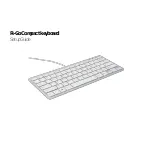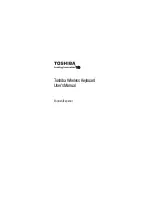
74
Creating a Performance
[F3 (PITCH)]
[F4 (OUTPUT)]
[F5 (FX SRC)]
[F6 (OFFSET)]
Parameter
Value
Explanation
Octave
-3– +3
Pitch of the part’s sound (in 1-octave units)
Note that when a rhythm set is assigned to a part, you cannot modify this parameter.
Coarse
-48– +48
Pitch of the part’s sound (in semitones, +/-4 octaves)
Fine
-50– +50
Pitch of the part’s sound (in 1-cent steps; one cent is 1/100th of a semitone)
Bend
0–24, PAT
Amount of pitch change in semitones (2 octaves) that will occur when the Pitch Bend Lever is moved.
The amount of change when the lever is tilted is set to the same value for both left and right sides.
If you want to use the Pitch Bend Range setting of the patch assigned to the part (p. 41), set this to “PAT.”
Parameter
Value
Explanation
Asgn
MFX 1–3,
A, B, 1–4,
PAT 1–3
Specifies for each part how the direct sound will be output.
MFX 1–3:
Output in stereo through multi-effects. You can also apply chorus or reverb to the sound that passes
through multi-effects. Specify which multi-effects (1–3) will be used.
A, B:
Output to the OUTPUT A (MIX) jack or OUTPUT B jack in stereo without passing through multi-effects.
1–4:
Output to the INDIVIDUAL 1-4 jacks in mono without passing through multi-effects.
PAT 1–3:
The part’s output destination is determined by the settings of the patch or rhythm set assigned to the
part. Specify which multi-effects (1–3) will be used.
* If you’ve made settings so that sounds are separately routed to the INDIVIDUAL 1 jack and INDIVIDUAL 2 jack, but
no plug is actually inserted in the INDIVIDUAL 2 jack, the sounds routed to INDIVIDUAL 1 and INDIVIDUAL 2 will
be mixed and output from the INDIVIDUAL 1 jack.
* If the Mix/Parallel parameter is set to “MIX,” all sounds are output from the OUTPUT A (MIX) jacks in stereo (p. 194).
* If you’ve set Tone Out Assign to “MFX,” set the MFX Output Assign parameter to specify the output destination of the
sound that has passed through the multi-effects.
• Chorus and reverb are output in mono at all times.
• The output destination of the signal after passing through the chorus is set with the Chorus Output Select and
Chorus Output Assign parameters (p. 161).
• The output destination of the signal after passing through the reverb is set with the Reverb Output Assign pa-
rameter (p. 161).
Output
0–127
Level of the signal that is sent to the output destination specified by Part Output Assign
Chorus
0–127
Level of the signal sent to chorus for each part
Reverb
0–127
Level of the signal sent to reverb for each part
Parameter
Value
Explanation
MFX1–3
OFF, ON (
✔
)
The settings of a specific patch can be used as the settings for MFX1–MFX3, chorus, and reverb. This setting
specifies the part to which this patch has been assigned.
If no part is selected, the settings of the Performance will be used.
Chorus
Reverb
Parameter
Value
Explanation
Cutoff
-64– +63
Adjusts the cutoff frequency for the patch or rhythm set assigned to a part.
Reso
-64– +63
Adjusts the Resonance for the patch or rhythm set assigned to a part.
Coarse Tune and Octave Shift
The Coarse Tune and Fine Tune parameters, along with the
Octave Shift parameter, can all be seen as doing the same thing to
the sound, i.e., changing the pitch of the sound. For example, if C4
(Middle C) is played with the Coarse Tune parameter set to “+12,”
the note produced is C5 (one octave above C4). For example, if C4
(Middle C) is played with the Octave Shift parameter set to “+1,”
the note produced is C5 (one octave above C4).
However, internally these function very differently. When the
Coarse Tune parameter is set to “+12,” the pitch itself is raised one
octave. On the other hand, when the Octave Shift parameter is set
to “+1,” it is the same as pressing the keys one octave up. In other
words, use the Coarse Tune parameter when changing the pitch,
and the Octave Shift parameter when you want to shift the entire
keyboard, for example, when the number of keys is insufficient.
Fantom-Xa_e.book 74 ページ 2004年10月22日 金曜日 午後2時3分
















































